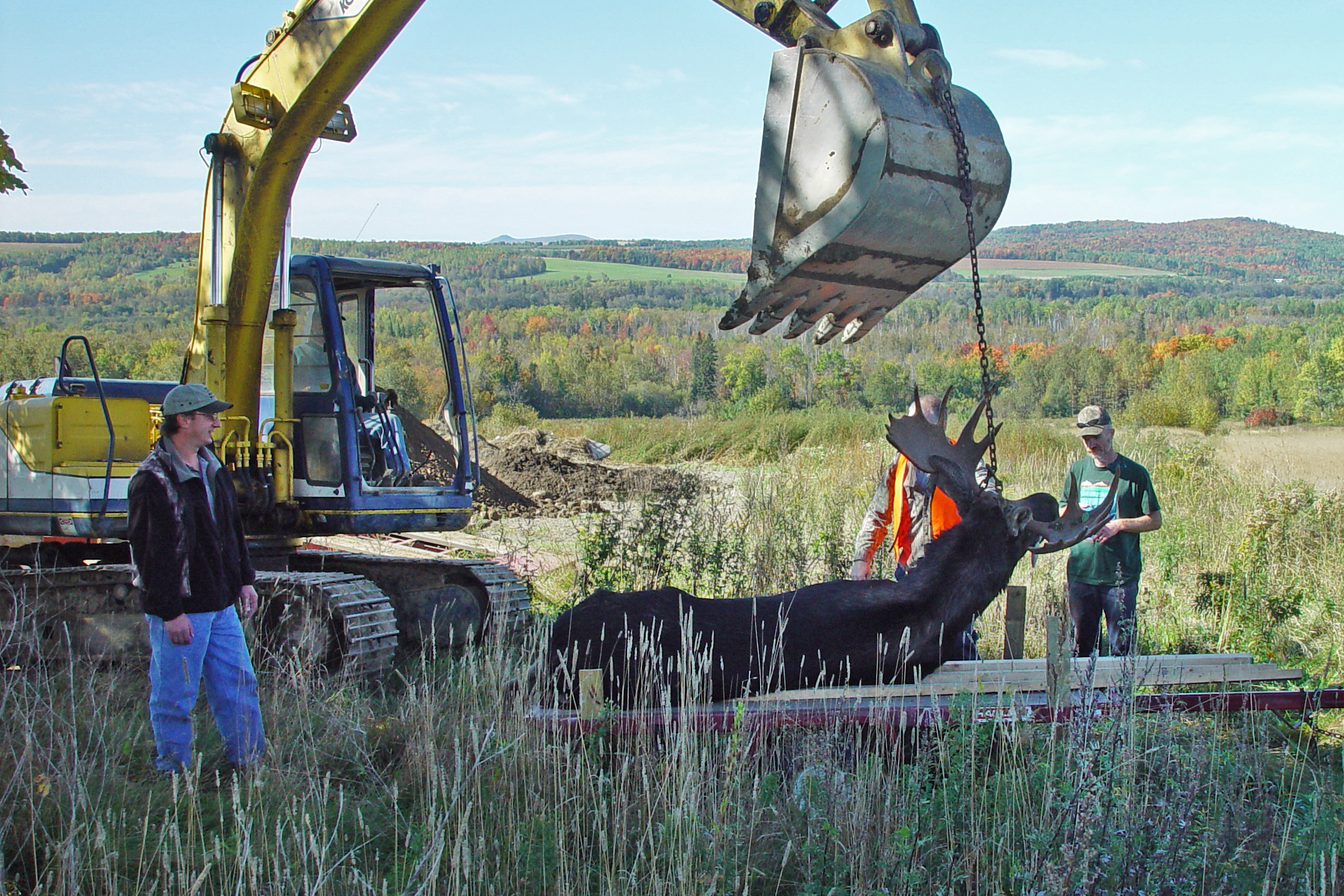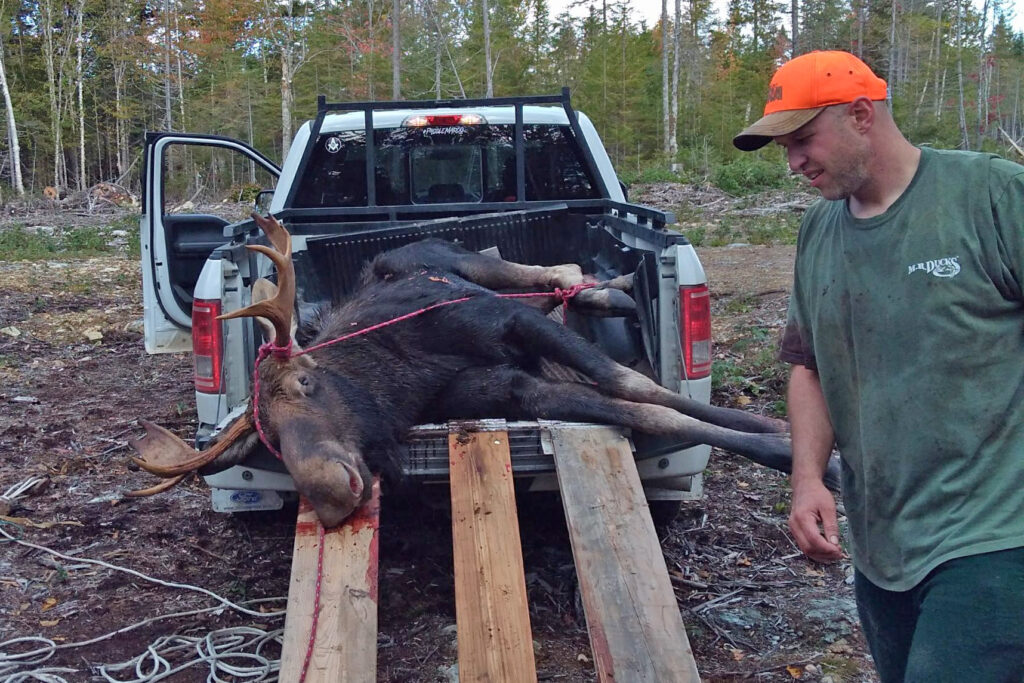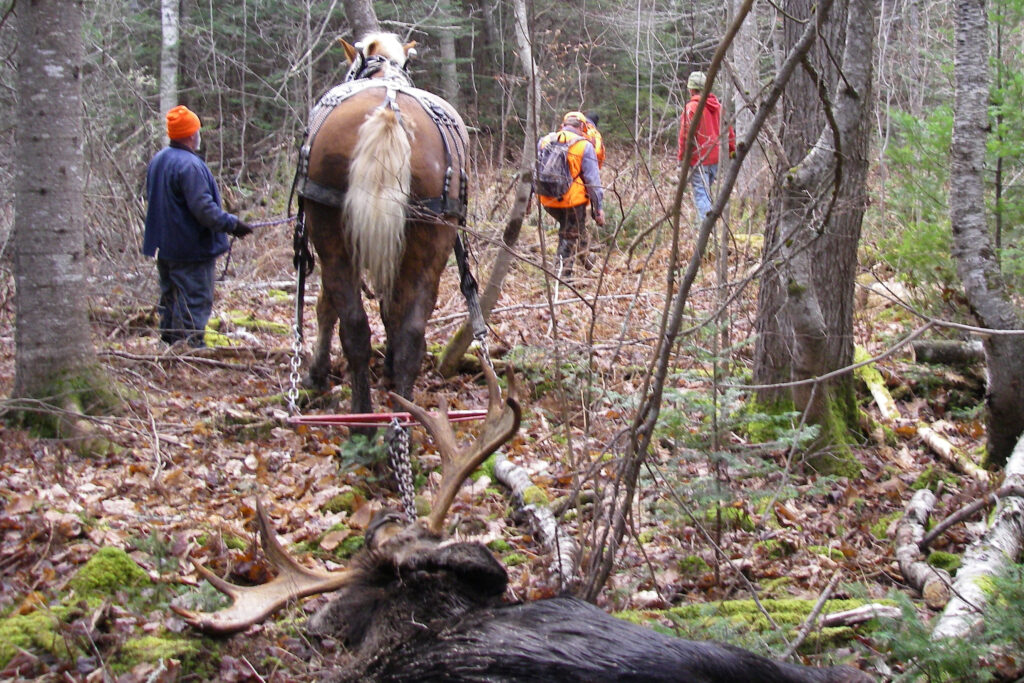
The first of Aroostook’s three weeklong moose seasons started Sept. 25. Lucky lottery winners and their co-permittees will be on the lookout throughout the Crown of Maine, six of the state’s most prolific moose zones. All are out for success and the memorable hunt of a lifetime.
For many hunters, planning for success began within minutes of reading their name on the lottery list. Most chores have to do with the personal gear, pertinent tools and apparatus to deal with a downed 1,000-pound game animal. Here are some ideas each team should consider.
First and foremost, the shooter must be able to assess a quick, clean, humane kill with rifle, handgun or bow. Limitations on distance, shot placement and prevailing conditions must be set and followed. Partners must know who will shoot first and who will shoot back-up and when. Shooters must spend time at the range, firing their favorite weapons from every feasible stance at life-size replicas when available, and moving when possible.
Camouflage clothing and cold-weather attire usually aren’t necessary, but a good set of lightweight Gore-Tex gear cuts the wind and shields the hunter from heavy rain that can hamper an outing. Orange outerwear for safety and calf-high waterproof boots broken in for comfort are a must.
Bow hunters, muzzle-loader shooters and handgunners need to be closer to their quarry, but need just as much pre-hunt practice to assure a lethal shot. They too need to select the best arrows, broadheads and bullets for large-boned, heavy-bodied moose. Close-range hunters will also have to decide if a tree stand or ground blind and calling might work better than sneak-and-peek tactics.

In each scenario, once the moose is down, after the pictures are taken and the tag attached, the work begins. Every moose doesn’t drop on the spot. Some run, usually into heavy cover, and getting a big game animal out of the deep woods can be a back-breaking task without proper gear. It’s a proven fact: the further a 1,000-pound moose is from the truck and trailer, and the wetter the location is, will be inversely proportional to how much fun the rest of the day will be.
Sharp cutlery is important for field dressing any game animal. At least two keen-edged knives are a must, and since they are likely to lose their edge during the job, a whetstone, file and sharpening steel will be needed for resharpening. If it turns out the moose has to be skinned, quartered and deboned in order to be carried out of the woods, the knives and sharpening utensils become even more important. A meat saw and hatchet will be very useful if a big job is required.
Have lots of ropes or cable and a sturdy come-along or winch to drag the game from the woods to the edge of the road, and then to pull it onto a truck or trailer. A set of heavy tree shears and a chain saw for swamping a trail can be a big help. Many hunters have had to winch a moose from stump to stump for several hundred yards, and without a saw and ax to move dead falls, the work would have doubled.
An ATV with all-wheel drive can save a lot of time and trouble during the hauling chore, but some regions of North Maine Woods do not allow ATVs, so check before you travel.

A fair-sized block and tackle or pulley system for hoisting the moose onto a tree will ease the cleaning, skinning and quartering chores and can also be used to load the animal on truck or trailer. A roll of cheesecloth or commercially available cloth bags for transporting game and keeping flies off the meat in warm weather will be a good idea. Plastic bags for the heart and liver should be at hand, and plastic gallon milk containers filled with water and frozen work great to keep the carcass cool during the trip to the meat cutter’s cooler. Just stuff the jugs of solid ice into the body cavity, along with the heart and liver bags, and there’s much less chance of meat spoilage on sunny days.
I carry a five gallon plastic bucket with plastic gloves, paper towels, and of course plastic bags, cloth meat bags, the cutlery and sharpening utensils and a small first aid kit — just in case the knife slips. The bucket can be used to carry water from any nearby brook or pond to rinse out the body cavity once the cleaning is over. Washing away as much blood and debris from any exposed meat reduces the chance of meat spoilage and keeps flies somewhat at bay during field processing and travel. Clean and cool are the two main objectives when caring for game animals; take care of the meat in the field and you will be rewarded at the dinner table.
Don’t forget your camera, a good set of binoculars and perhaps even a range finder. A small cooler with ice packs keeps a few cold drinks, sandwiches and snacks at hand in the vehicle. For the early season it’s also a good idea to have a manual or electric moose call, to draw amorous bulls within rifle range.
Whether the moose you’re after will end up as a taxidermy mount in the den, as an 8-by10-inch glossy on the office wall, or as a roast for Sunday dinner, the right equipment will increase your chances of success. Plan well and compile a checklist of every possible item you need to take along, because once you’re in the woods, you either have it or you do without.
Hunt carefully and safely, pick your shot well, take a steady aim and shoot straight. Memories are sure to follow.







